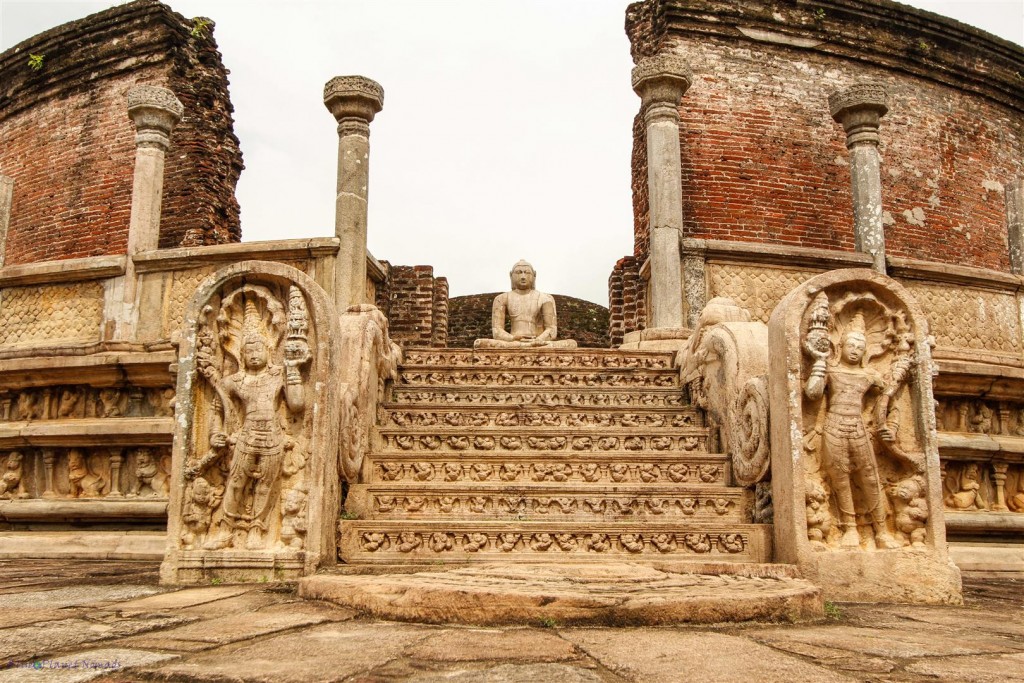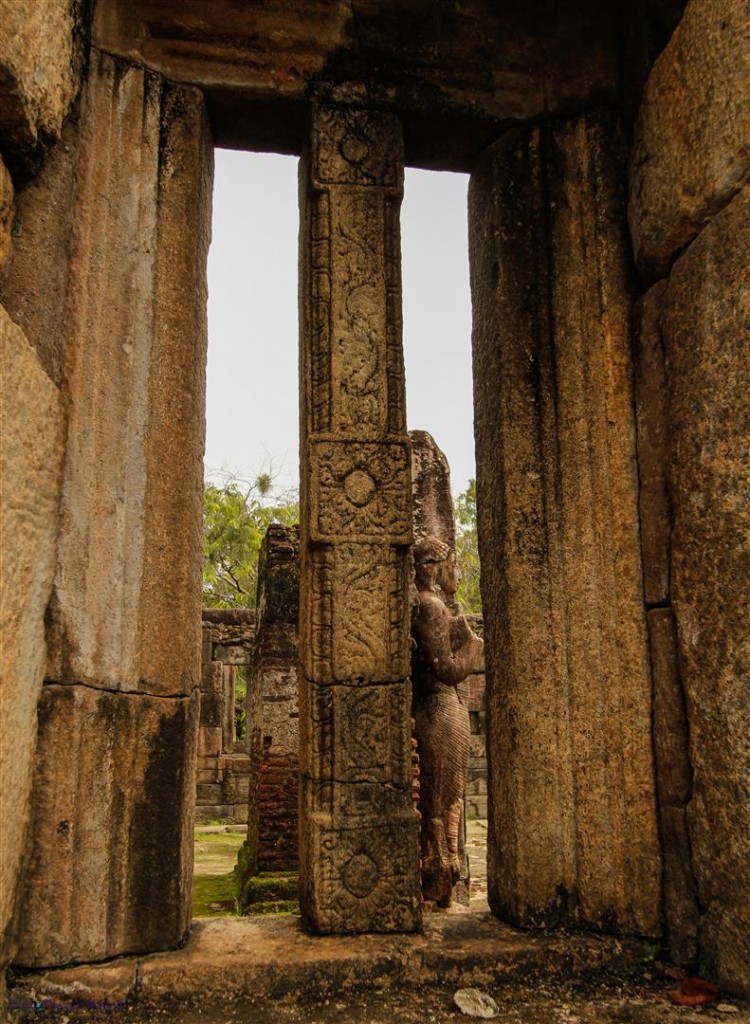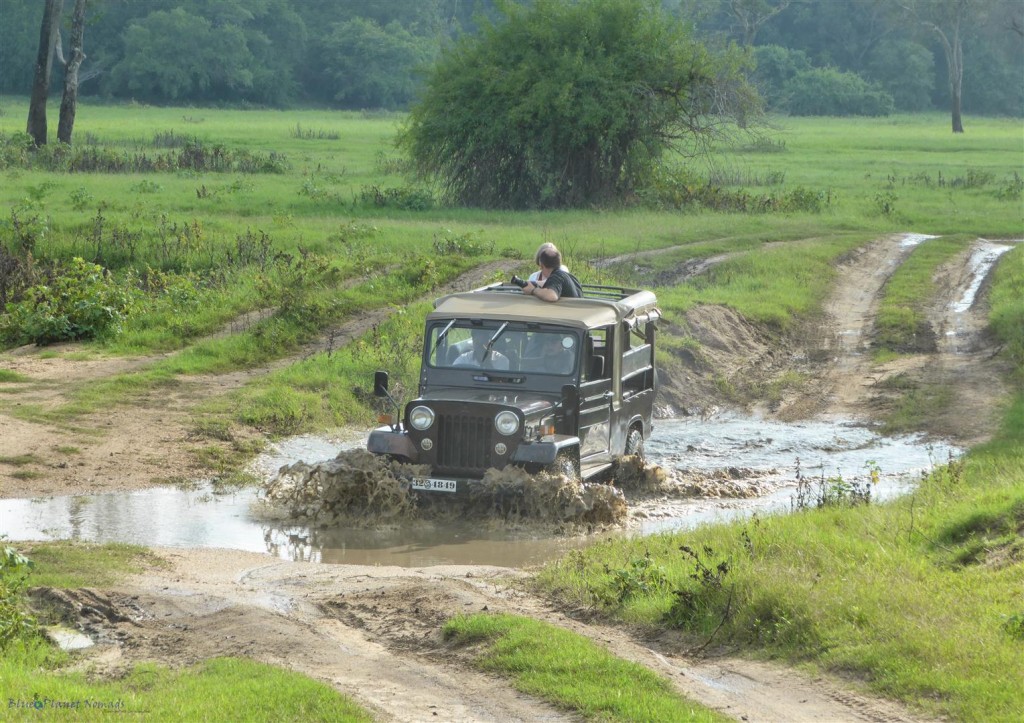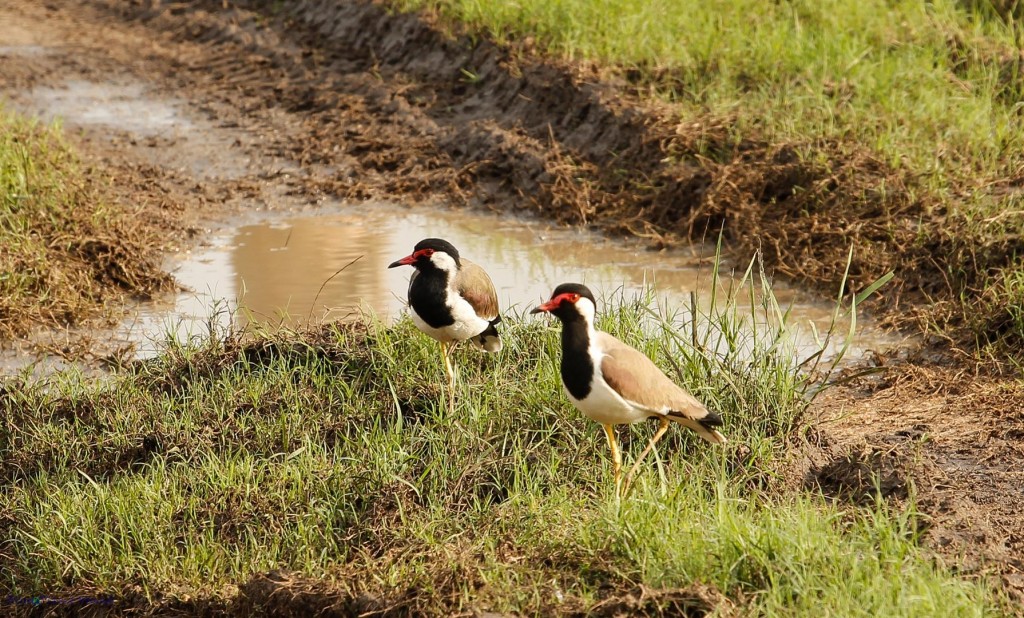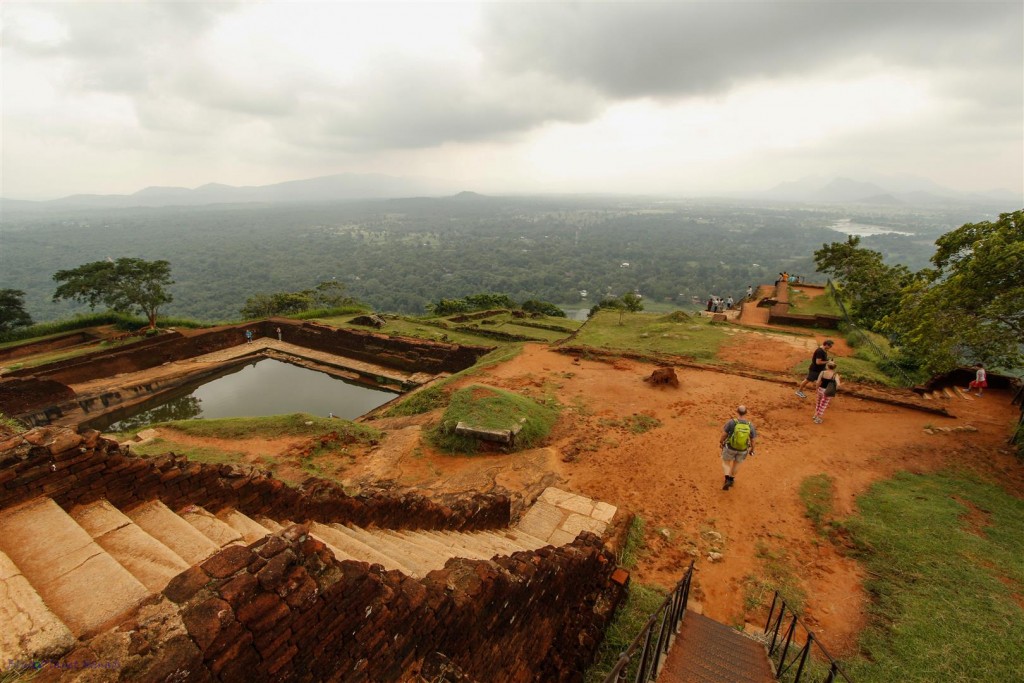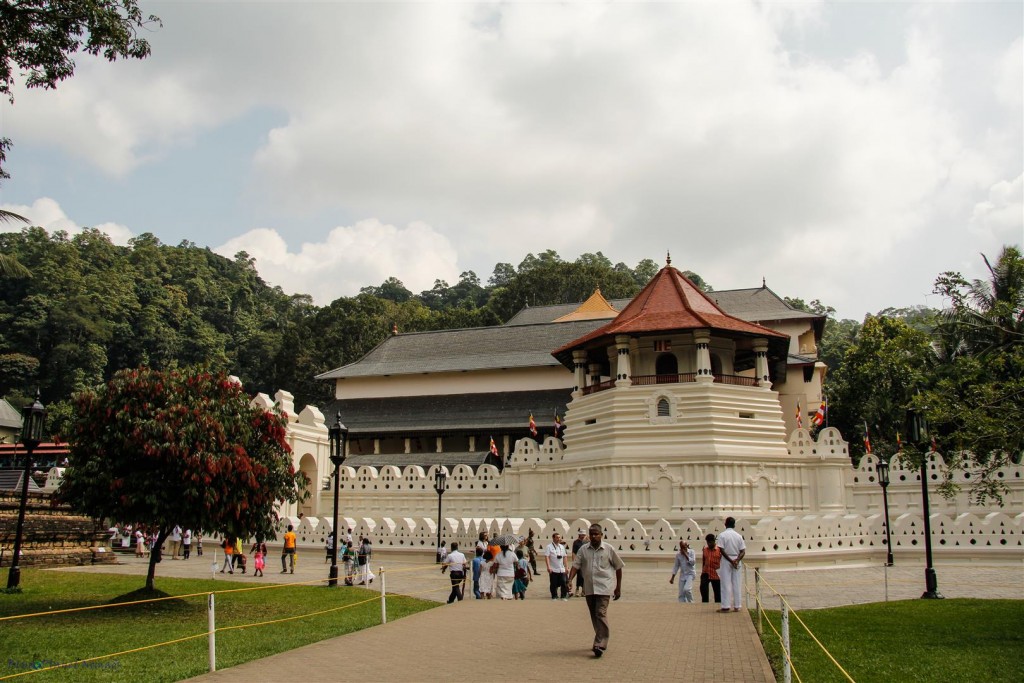[no_toc]
Destination Sri Lanka!
It was our first time in Sri Lanka and we were looking forward to what the tear drop shaped island in the Indian Ocean had to offer. We arrived to a pleasant tropical evening and were greeted at the airport by our private car pick up that we had organised with the guest house. Having just spent the last three weeks trekking in the Everest region of Nepal with temperatures as low as minus 6 Celsius, I was craving for some tropical heat and hopefully it would help me get rid of my bronchitis.


The beautiful Serendib Guesthouse we had chosen for a couple of days relaxation in Negombo was owned by our good friend Hilary, an expat from Scotland. For the next two days we enjoyed Negombo’s golden beach, good food and the company of Hilary and Budika who, by the way, makes the best breakfast in all of Sri Lanka!


We hadn’t really planned what we were going to see on this Island, only that we wanted to take in all the major sites like the Cultural Triangle, the Hill Country and the South Coast. Sri Lanka may be a small Island but its climate differs dramatically from one side of the country to the other. While Negombo and the rest of the west coast was basking in sunshine, Arugam Bay on the east coast would receive a drenching. I realised with all what we wanted to see we hadn’t given ourselves enough time with two weeks so made a change to our flight with Thai Air to give us an extra week, luckily the change cost us nothing! With the help of Budika, we decided to tackle the Cultural Triangle by private car then take the train through the Hill Country and use the very cheap local bus network along the South Coast. It is possible to do the Cultural Triangle by train and bus but it can also be overcrowded, slow and you would have to throw a few taxi rides into the mix. Having a driver was a far more comfortable and efficient way of seeing the Triangle and we had the chance to get off the beaten track a little and even take in a National Park. And for around US$70 a day which included the driver’s accommodation and food plus our accommodation, it wasn’t a bad deal, it certainly seems to be one of the more popular ways of getting around the country. We enlisted the services of Hilary’s driver Yohan for the three day trip and on the afternoon of the third day he dropped us off in Kandy. Over the three days we visited Dambulla Cave temples, Polonnaruwa historical ruins, Sigiriya Rock, a spice garden and Kaudulla National Park. The only heritage site we didn’t see was Anuradhapura as it was another hour’s drive or more further north than Sigiriya and we didn’t think we would have enough time so we decided to leave this one for another visit.
Day 1 – Negombo to Dambulla
We set off on the morning of the 6th December around 9am towards our first stop – Dambulla Cave Temples, about 2hrs north east from Negombo. The roads are fairly good, mainly single lane highways but the Sri Lankan drivers are crazy to say the least! The countryside is lovely, thick tropical vegetation of fruit trees and palms, in some way it reminded me of Fiji. On the way we stopped at a pineapple plantation where we were able to wander into the field and get a closer look at the plants.

We arrived at Dambulla later in the morning. The cave temples, also known as the Golden Temple, dates back to the 2nd century BC. The temple complex sits upon a large rock outcrop overlooking the Dambulla plains and is the largest and best-preserved cave temple complex in Sri Lanka. After paying the 1500 LKR (US $10) entrance fee, we wandered in and before us stood the golden temple monastery built last century to provide better accommodation for the cave monks. The giant golden Buddha statue that sits upon its roof top is a recent addition, only being built in 1998. There is also a small museum at the base of the temple.

We were more interested in seeing the cave temples than the gaudy structure before us so made our way up the steps past the monkeys, snack and trinket sellers to reach a terrace that afforded lovely views across the plains.


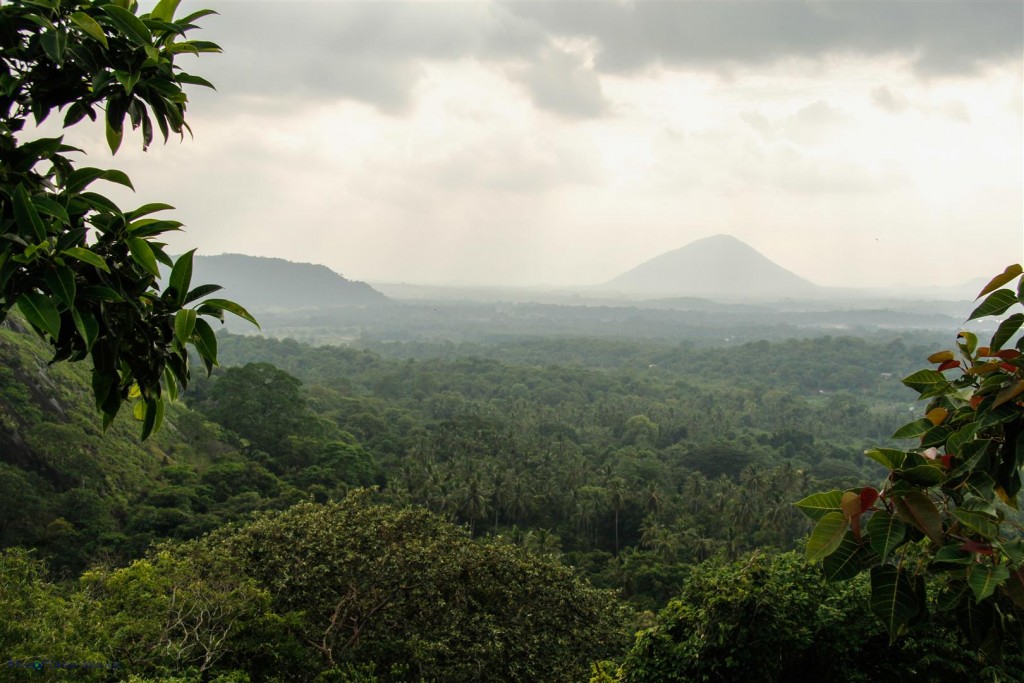
There were 5 cave temples in total, all of different sizes and offering something a little different. The entrance to the caves were protected behind a white temple facade that provided a shaded corridor. Having removed our shoes, we made our way up the steps to the corridor and started with cave 1 (Lord of the Gods,) a small cave that featured a 45 ft reclining Buddha. Each of the caves were dimly lit to preserve the magnificent colourful wall paintings and Buddha images. There are about 147 images in total, each cave had a mixture of sitting and standing images as well as images of gods and kings. The rock surfaces, ceilings and walls were covered in amazingly preserved brightly coloured paintings. Cave 2 (Cave of the Great Kings) was the largest of the caves and also the most attractive with its 60 Buddha images and statues of the King Valagamba and King Nissankamalla.






We spent a good hour or more exploring the cave temples, they were the most impressive cave temples we had ever seen, the level of detail, vivid colours and preservation of the paintings were amazing. Our next stop was lunch at some fancy restaurant on the way to Sigiriya. The food was nice, as was the service, and we were the only ones dining, obviously the bus loads of tourists hadn’t turned up yet! Although it was a nice restaurant, it was little more than what we wanted to pay and we prefer the more cheaper rustic places where the locals go. After lunch was onto our lovely accommodation in Sigiriya at Melrose Villas. It was going to be a our bed, breakfast and dinner for the next two nights while we continued to explore the region. The very spacious villas overlooking a peaceful garden had great views of Sigiriya Rock. We had the rest of the afternoon to relax so I asked one of the staff if the track that led from the Villas would take me closer to the rock for some photos. We both went for a walk but after a while turned back as the track became wet and impassable but it was a nice opportunity to have a chat with a local and learn a little about the area.


Day 2 Morning – Polonnaruwa
We were up early for a full day’s sightseeing with our first stop at the UNESCO World Heritage site of Polonnaruwa which was Sri Lanka’s second capital city after the destruction of Anuradhapura in 993. Being history fanatics, the park was set to delight us with archaeological ruins of ancient structures, that stretches from the 10th century (the age of Brahmnism) to the 11th and 12th century Buddhism. The US$25 (around 3,327 LKR) entrance fee is steep especially when we considered what we had paid for entrance fees to heritage sites in other Asian countries which are never much over $10. We don’t object to paying more than the locals but when Yohan told us he only pays 200 LKR this difference is very significant and we felt foreigners are ripped off.


The site is quite large and many people hire bikes or are ferried by vehicle between the major attractions, so Yohan suggested we start with exploring the top section, meet back at the car and he would take us to the bottom section and skip the least interesting bits in between, otherwise it’s a long walk!
No sooner had we entered and I had lined up that perfect shot, when a wooden elephant appeared in front of me from nowhere and the slender coffee coloured hand holding it had a big grin on his face, then he spoke those annoying string of words “You buy lady, I give you good price” I can’t believe this, we had just paid $50 to get in here and now I’m to be pestered and followed by trinket sellers. Why are they not banished to the outside walls like they are at the Taj Mahal? For the next few hours we managed to shake off the two legged annoyances and explore in detail the amazing ruins and have our fill of palaces, tombs, religious relics and stupas. It had a “Angkor Wat” feel to it, the treed surrounds, moss covered stonework and tree roots claiming old tumbling stone walls, we really loved it.
The park was also home to some wildlife like the Grey Langur monkey and lizards. We even had a close encounter with a snake! Having spent most of the morning at the park and covered just about everything of interest, it was time to eat and Yohan took us to a nice guesthouse where we enjoyed a buffet lunch.
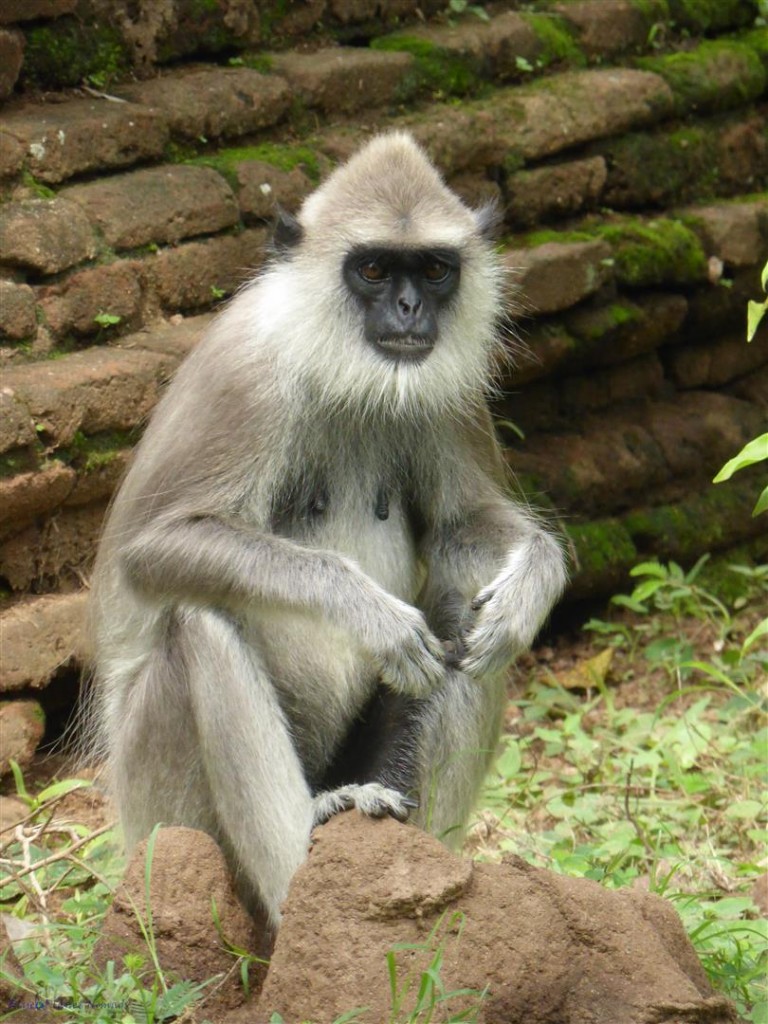
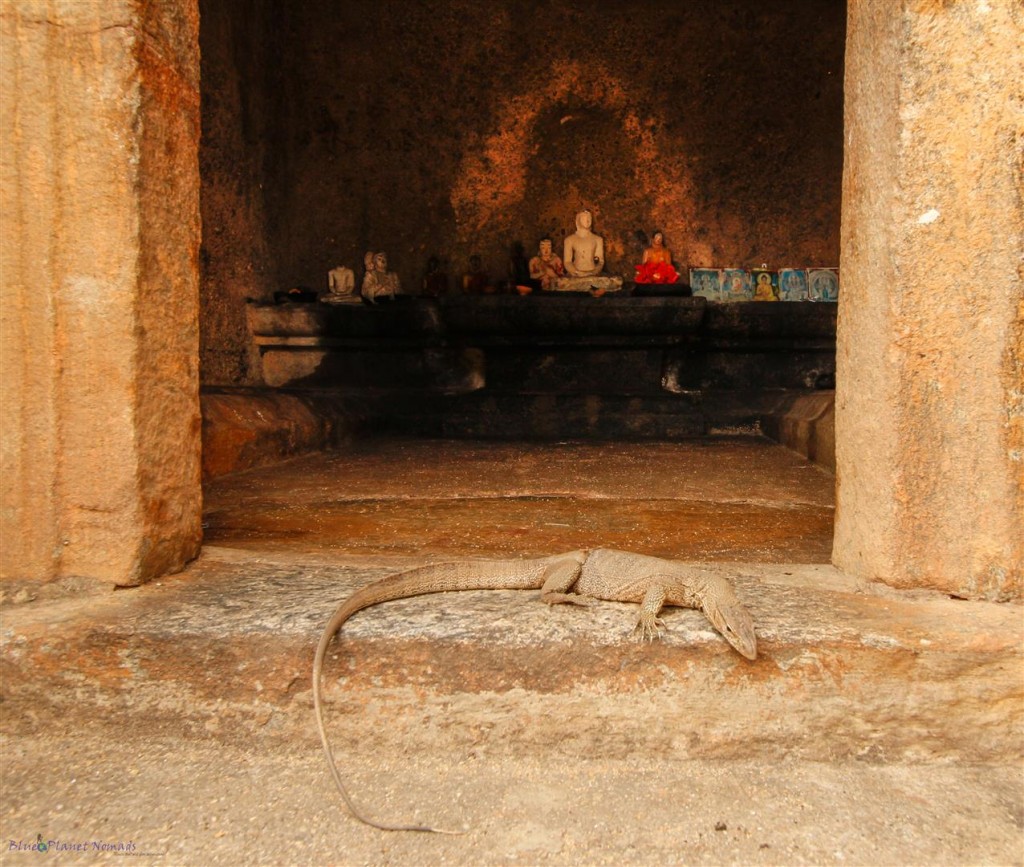
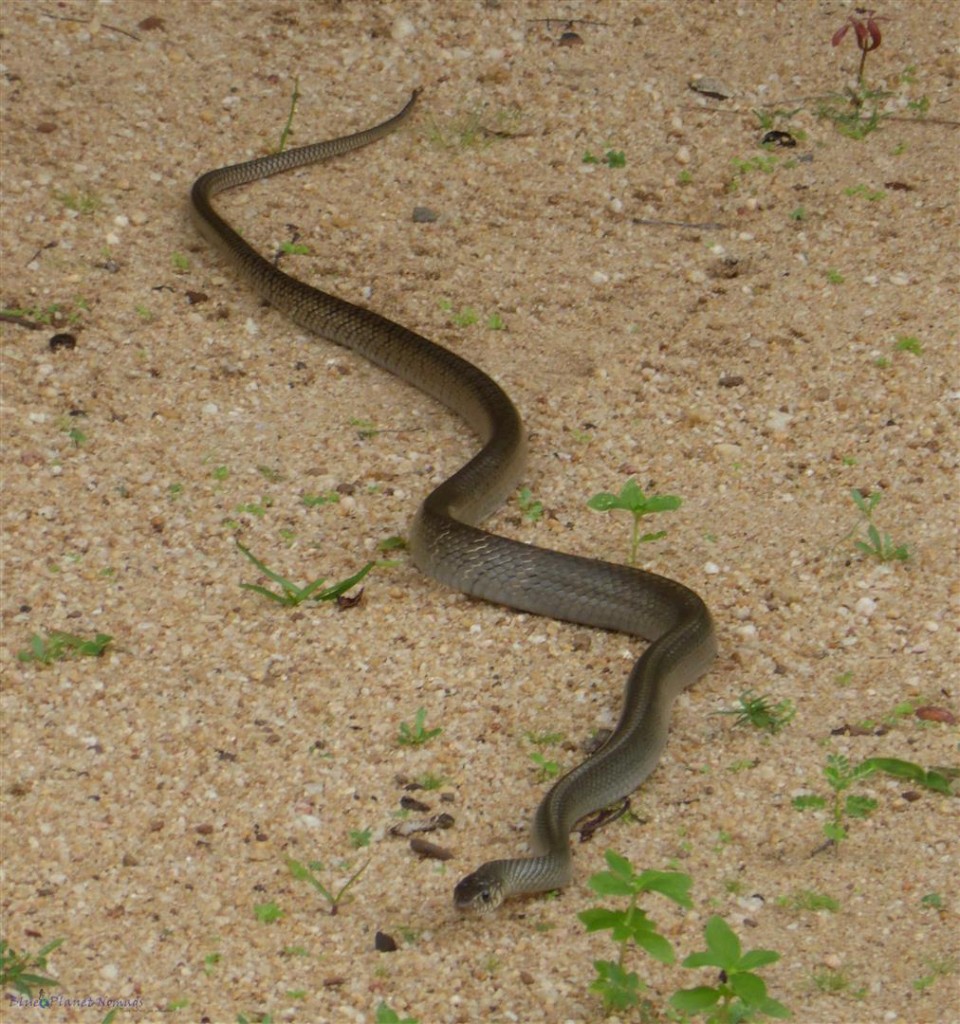 Day 2 Afternoon – Kaudulla National Park
Day 2 Afternoon – Kaudulla National Park
In the afternoon Yohan drove us to Kaudella National Park where he said a majority of the elephants had migrated to as the tank there was full of water. On the way we had a small road block in the slithering form of a python for which I couldn’t resist getting out the car for a closer look given I’m one of those rare people who likes snakes. We also stopped to see a water monitor pool, although it was a tourist trap as a local took advantage of the fact that tourists are amused at watching “The Lizards” climb trees. You can watch the display but it came at a price.


The entrance to the national park with Jeep hire and guide was US$100 for the both of us. Vaughan had a fit and thought it was too expensive and also cheeky that you had little choice with Jeep hire. I did point out to him that it was for the two of us and in Africa you would be paying twice as much if not three times. The Jeeps were open top so you can stand up and have unobstructed viewing, there was only 4 of us in our Jeep which gave us plenty of space to move around. The first part of the drive is dirt track edged with bush where we spotted some pretty nice colourful birds.


The bush then opened up onto a vast grass plain with a large water filled lake (tank). We were blessed with plenty of mammal and bird life like egrets, parrots, wild peacocks and of course plenty of elephants. The tank was also used by local farmers to water their cattle. Vaughan and the guide had some fun with a game of “who can count the most elephants” between them they counted 202 in total. We even spotted a crocodile on the way back, although it ducked under the water pretty quickly to avoid being photographed!. It was a lovely afternoon’s safari; we got to see plenty of adorable pachyderms and bird life and I thought it was worth the money and I would like to see Yala as well in the south which is even more expensive but I think one park is enough for our budget on this trip.
Day 3 Morning – Sigiriya Rock
Yohan had suggested we leave early and start climbing the rock before it gets too crowded. Another steep entrance fee this time US$30 so we made sure we spent as much time as possible here not missing a thing to get our money’s worth. Sigiriya Rock is another UNESCO listed World Heritage Site and the most visited historical site in Sri Lanka. The 200 meter high massive column of rock that juts out of a forested plain is the site of an ancient palace built by King Kasyapa some 1600 years ago and is one of the best preserved examples of ancient urban planning. As we enjoyed the stroll up the long path past the fountain gardens we saw something we really didn’t need to see. A domestic dispute was taking place between a local couple and it turned ugly when he punched her that hard he knocked her out. We thought best not to get involved besides there were plenty of locals running to her aid, we really hoped she was alright. We did give him our two cents worth of abuse as the bully made his way past us for a quick exit.

At the base of the rock is the boulder gardens and the start of 1200 steps to the summit. The first part of the climb took us from the boulder garden to the terrace gardens where we met some red-faced macaques and a mongoose looking creature climbing down a tree. We then climbed more steps up to a walkway that took us past the mirror wall which was once a highly polished gleaming white parapet wall from which it got its name. It was then up a spiral metal staircase to the very well preserved colourful frescoes of semi naked women which Vaughan took great delight in observing! To quote a phrase he says “I don’t know much about art but I know what I like!”



Another staircase then took us up to the terraced gardens and Lion Staircase, so named because of the two giant stone lions feet guarding the base of the staircase. At this point it was starting to get more crowded and the last climb up the metal staircase to the summit was a busy single file queue. Finally at the top we thought overall it wasn’t too bad a climb and not really all that difficult, it looks steeper than it actually is from the very bottom.

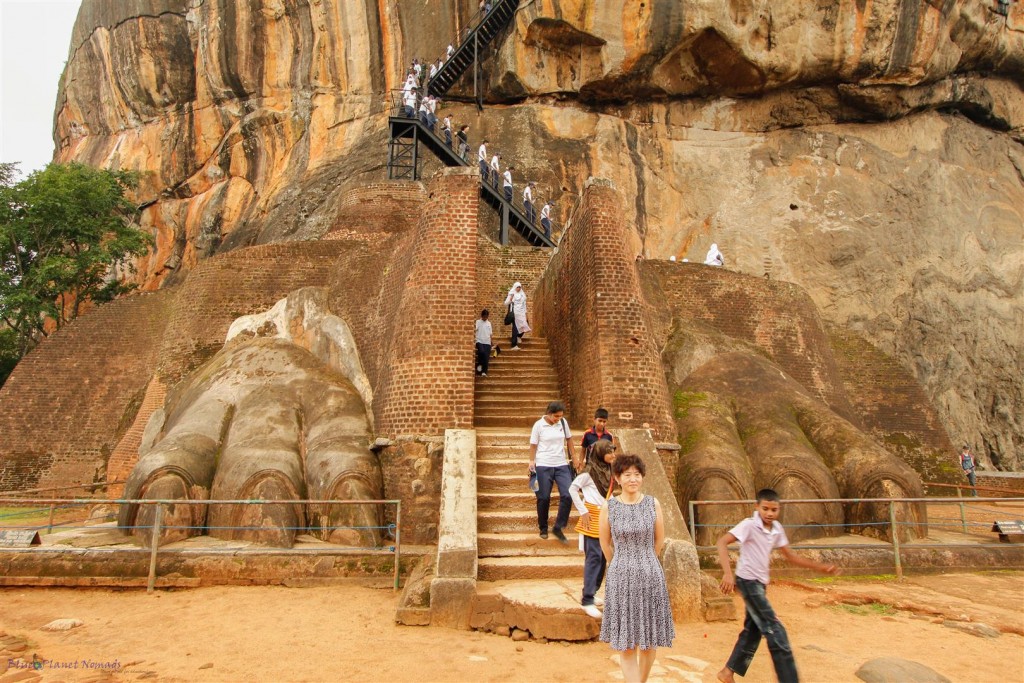 The summit contains the remnants of the palace remains, mainly the foundations. There were also series of lotus pools dotted around but what was truly amazing was the spectacular views. It was a little misty but you could make out the jagged peaks of the hill country which is our next destination after Kandy. A large white Buddha statue also stood well above the tree line.
The summit contains the remnants of the palace remains, mainly the foundations. There were also series of lotus pools dotted around but what was truly amazing was the spectacular views. It was a little misty but you could make out the jagged peaks of the hill country which is our next destination after Kandy. A large white Buddha statue also stood well above the tree line.
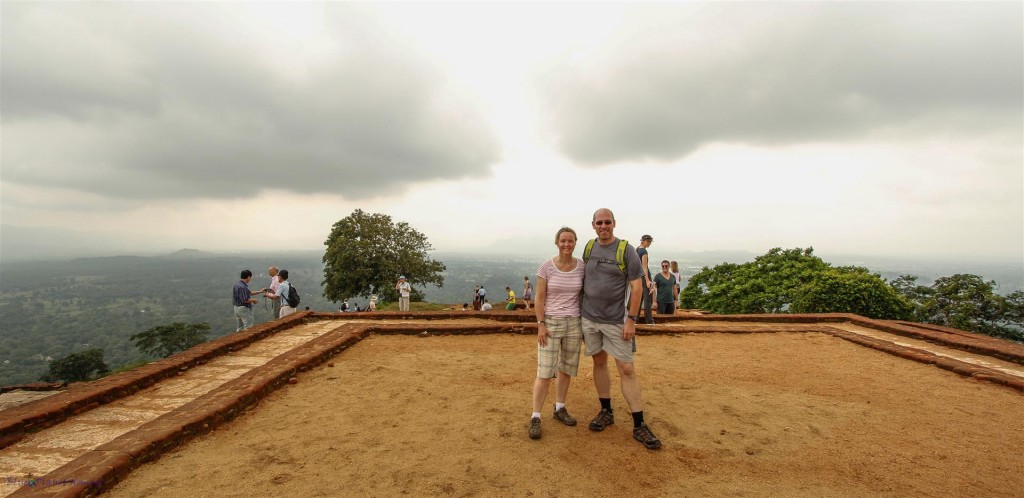

The climb down didn’t take too long and we explored a little more of the boulder garden and caves at the bottom taking care to avoid a very large hornets nest. We finished off with a nice cold fresh fruit juice at one of the many little refreshment stalls near the entrance.
Day 3 Afternoon – Spice Garden
As we still had plenty of time Yohan suggested visiting a spice garden half way between Sigiriya and Kandy. The garden was very interesting, we got to learn about the various spice plants like cardamom, curry leaf and cumin, all those amazing smelling and tasty spices that I’m familiar with when making curries at home. It was also a centre where they made their own cosmetics so we got try some natural products and learn how they make them. At the end of the tour we were treated to a massage which was the price of a small donation. Lunch was at a local place this time, we had said to Yohan that we wanted to eat where the locals eat and not the overpriced tourist places. The meal was the best we had, really tasty Kothu Roti, fresh fruit juice followed by an ice cream and all for only $6.


Yohan dropped us off at Spica Holiday Home in Kandy around mid afternoon. We said our goodbyes, gave him his tip and said we would see him again in a couple of weeks when we were back in Negombo. Our guest house house for the next two nights was up on a hill in a residential area a little out of town, probably not a good idea as every tuk tuk driver was intent on ripping you off. The owners an elderly couple were renting out their extra rooms to supplement their retirement, because he as a retired Navy officer didn’t get a very good pension so he told us. For $26 a night it was cheap. We didn’t venture out that evening, Kandy looked busy when we drove through it and noisy so instead I enjoyed some rest and home cooked food as I was still suffering from the cough that I brought with me from Nepal.
Day 4 – Temple of the Tooth in Kandy
Our morning breakfast is something I will never forget. We had the usual fare like toast and jam, omelette and fresh fruit as well as a pot of delicious Sri Lankan tea. It was when I opened the marmalade and a hundred or so ants escaped running all over the table is what made this moment something to remember! I was in the middle of bringing my fist down on the table to squash said ants and a shocked voiced erupted behind me and said “Don’t kill them, they have souls”!! I did remind our retired Navy officer host that perhaps when you’re running a guest house it’s a good idea not to feed your guests food with added protein! As charming as the place is I don’t think we will be returning.

Kandy is a small and relatively charming city built in a wooded valley and around the pretty Bogambara lake. We thought two days was enough to take in the attractions and given we didn’t do much exploring yesterday we now only have one full day as tomorrow we wanted to head into the hill country. We were unfortunately on a time constraint because we had the “Expo Rail” booked from Nurwara Eliya to Ella.


Kandy’s main attraction is Sri Dalada Maligawa or “Temple of the Tooth Relic” a Buddhist temple located in the royal palace complex of the former Kingdom of Kandy. Since ancient times Buddha’s left canine tooth has played an important role because whoever holds the relic holds the seat of power of the country. Today the site is still an important religious centre for devoted pilgrims who journey here in their masses from all over the world to worship their beloved relic. Before going to the temple we thought it best to find the station and purchase tomorrow’s train ticket. Fortunately the train station wasn’t too far a walk and buying a couple of tickets wasn’t too difficult either and cheap at $4 each. The tickets we had purchased were 2nd class or so we thought, but more about that in the next post!.

The temple is situated on the northern end of the lake and is encircled by a small moat more to add charm than deter anyone. We handed over the US$10 entrance fee plus our shoes then took the bridge over the moat to enter the first floor temple shrine and drummers courtyard. We stopped here for a while to observe the daily rituals of the monks and prayers of devoted Buddhists . An intricate carved chamber with a large wooden door decorated with bronze and ivory and guarded by 7 large tusks centred the yard. Behind the shrine was the new shrine room and museum which had a large golden Buddha statue one end, while large colourful paintings depicting the history of the tooth relic hugged the walls around the shrine. The whole complex is quite beautiful and very spiritual and we were very much the minority amongst the devoted locals.




Three times a day they open the chamber to where the tooth is encased in 7 gold caskets studded with precious stones. We were lucky that we were there at the right time for the viewing of the relic. We joined the hoards in the upper floor chamber and shuffled our way in a very tight queue passed the relic snatching a 5 second glimpse before being moved along. It was very interesting watching the pilgrims and their excitement and eagerness to get a glimpse of their deity but we were glad to escape the crush of the human carousal.
Outside there was more museum buildings including the World Buddhist museum which you needed an extra ticket for (500 LKR) so we just wandered around enjoying the architecture and watching the locals as they offered incense and lotus flowers to the shrines. A Bodi Tree also stood in the grounds and seemed to be the focus of attention for many locals, we thought about joining the queue for a closer look but decided against it. It was an experience visiting the temple and it really was beautiful but you have to be prepared for big crowds of devoted pilgrims. Outside the temple complex was a piece of European history in form of St Paul’s Anglican Church, evidence that this was once a British colony.
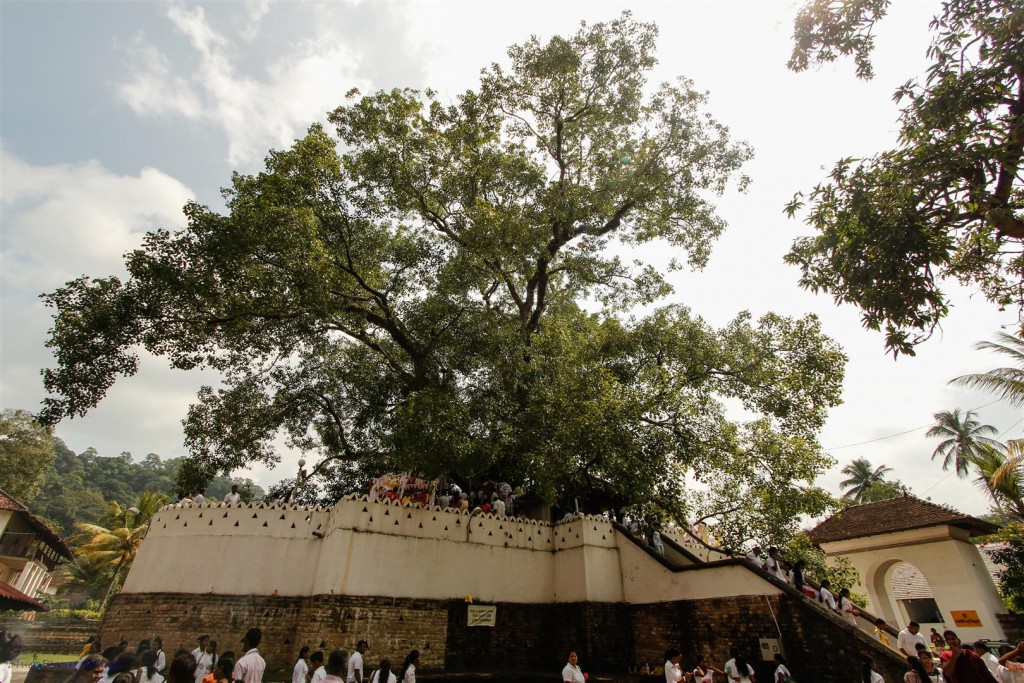

We spent the rest of the afternoon wondering around the shops and market. Lunch was in one of the local cafes. We ventured into a modern shopping mall with a fully decorated Christmas tree at its centre, reminding me that Christmas really wasn’t that far away. We decided that evening we would come back into town and have dinner at one of the Chinese restaurants giving us a break from Sri Lankan food. I would tell you what its name is but I can’t remember, only that it was tasty!

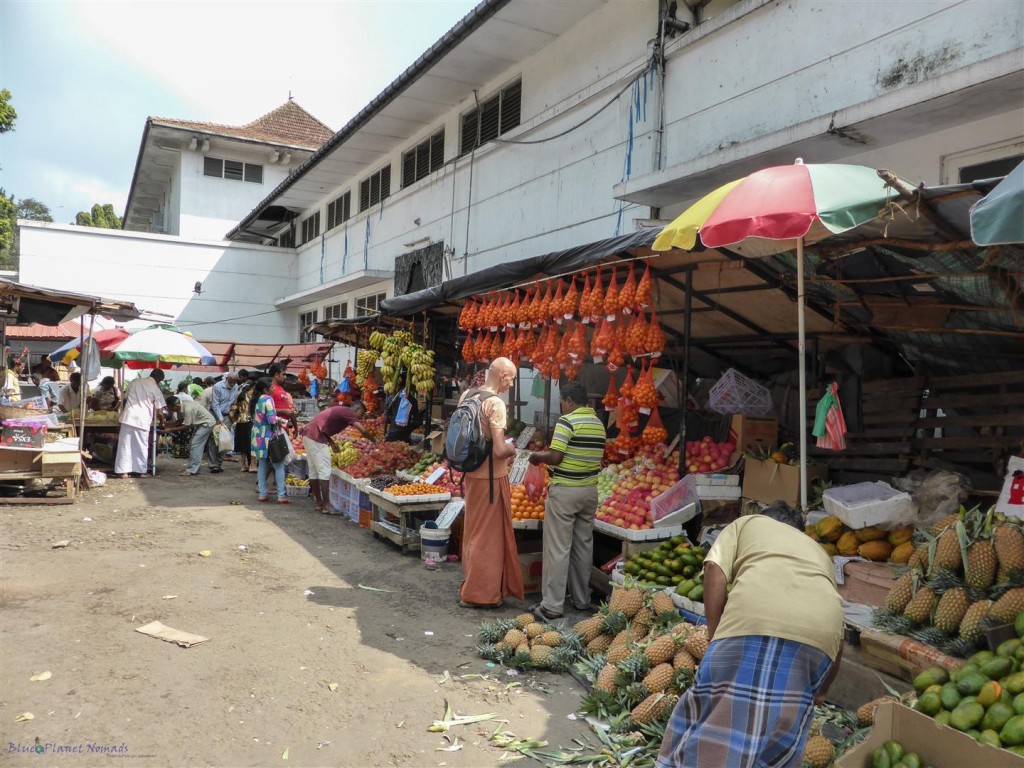
Like the photos? The full gallery can be viewed in “Trip Photos”
Have you visited Sri Lankas cultural triangle? if so love to hear what you thought
In my next post I will take you on a journey “by train” through Sri Lanka’s Hill Country





